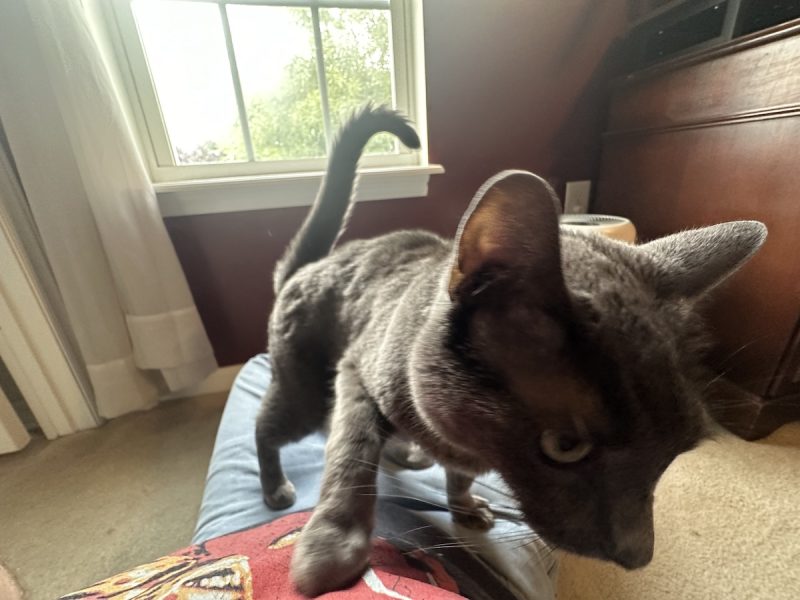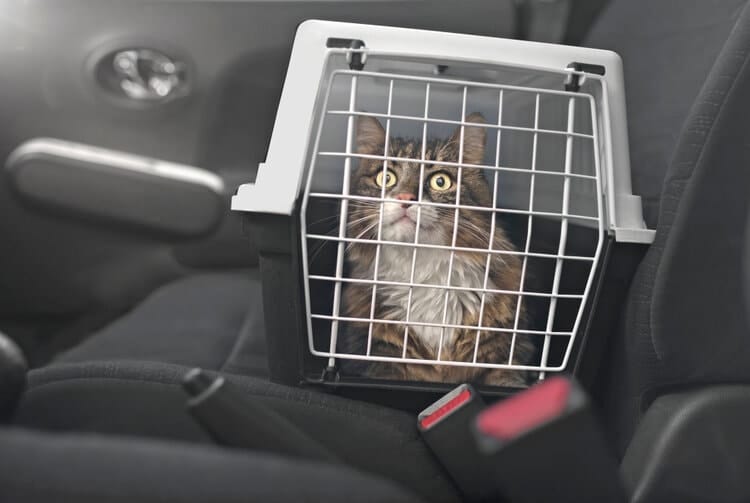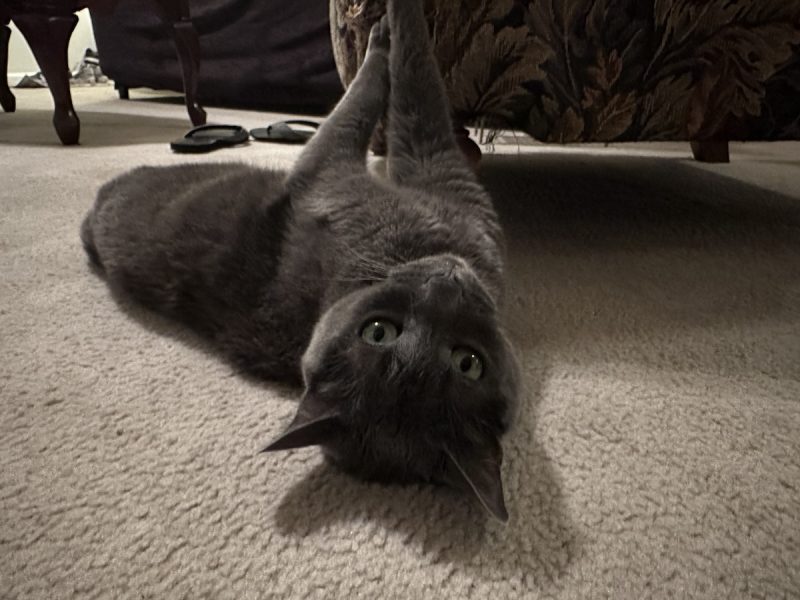In this article
Making a big move can be scary, especially when that means switching owners or going from a shelter to a forever home. For cats, they don’t ask to be brought into this world or passed around when people are down on their luck. Yet, they still find themselves in situations where they have to enter shelters or find new homes.
If you welcome a fully grown cat or kitten into your home, you might wonder how to make them comfy. There isn’t a one-size-fits-all response, as every cat is different. But here are 12 different ways you can make your cat cozy.

Top 12 Tips to Make a Cat Feel Comfortable in a New Home
1. Meet a Few Times First
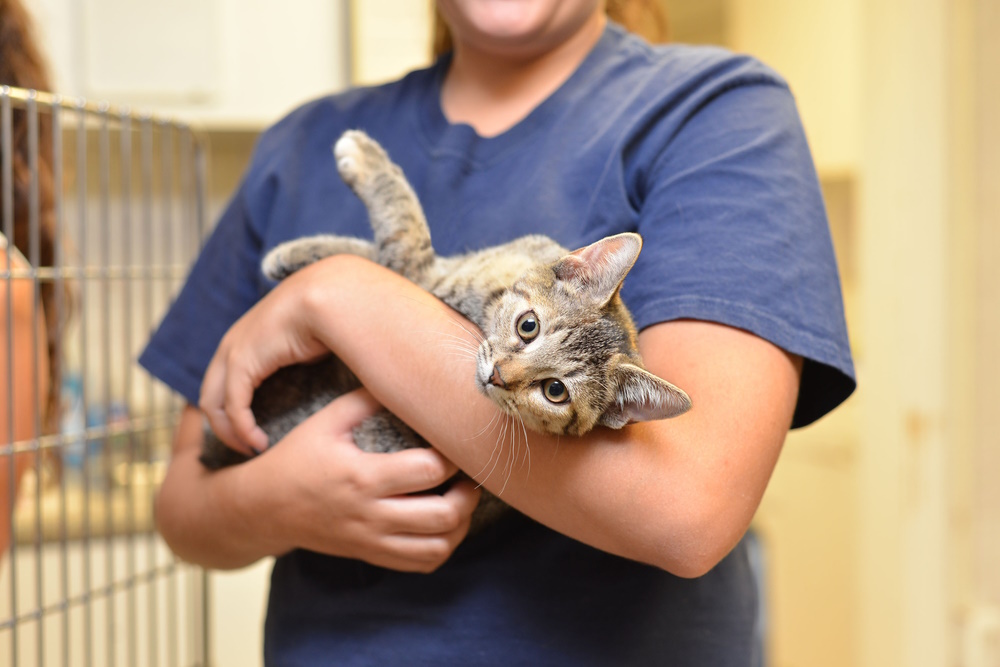
If you’re adopting from a rescue or shelter, it might be a good idea to meet the cat more than once before bringing them home. You can spend some time getting to know the cat during the adoption process and bring family members for a meet and greet.
This is a terrific way to take it slow and ensure compatibility, and also help form a bond with the cat before bringing them home. If there are any problems, you can determine if it’s a proper fit. The shelter employees will also pick the most appropriate home for each cat, so keep an open mind!
Many cats are unfortunately rehomed due to incompatibility. There are certain types of cats that just don’t work well with people with certain lifestyles. For example, the cat might be extremely prey driven, and you have caged animals that could be in danger.
Or, alternatively, the newcomer might absolutely hate children, other cats, or dogs due to trauma or preference. While you might think they just need time to warm up, some never do. It can be a tense living situation after a while, which could result in homelessness again.
2. Let Them Explore
Don’t try to pressure the situation. Let the cat acclimate as they see fit. If they want to roam around the room, sniffing everything in sight, don’t try to intervene. Every step they take will tell them more about their new environment and it is crucial that we let them digest it.
You might not even recognize how important the sense of smell is for a cat. It tells them more about their surroundings than your soothing words, and we mean that with all respect! As they explore, it is okay to encourage them to recognize certain things but try to take a backseat and let them explore on their own.
The more you let the cat jump on, climb under, sniff, paw, or run from all the stimuli, the more they will realize that this new home is not a threat! It’s a safe zone where they can feel completely at home.
Is there anything better than a happy cat? We don’t think so—that’s where the Hepper Nest Bed comes in.
This product was designed with both your and your kitty's happiness in mind. While the comfortable bowl shape and wide lip to rest their heads on are ideal for sleepy kitties, you’ll appreciate the removable and machine-washable fleece liner for easy cleaning. It doesn’t get any better than this! Click here to try it out. At Catster, we’ve admired Hepper for many years and decided to take a controlling ownership interest so that we could benefit from the outstanding designs of this cool cat company!
3. Stay Calm Around Them

It’s very exciting to bring your cat home. But instead of using loud, high-pitched voices or excitable actions, try to stay very calm and use a soothing tone of voice. The calm state will make them realize that everything is safe, and they will warm up to you much quicker.
If you are frantic or moving around erratically, the cat might sense you could be a threat. So, all the attempts you try to bring them out of their shell might actually make the process take longer.
Try to sit down on the floor at first and just be silent. If the cat shows interest in you or comes up to you, you can then talk softly to them, or even pet them if it seems like that’s what they want. If their body language tenses up, try to keep it to voice only.
4. Create a Routine
Keep everything consistent around the house. Try to feed them at the same time of day, let them have alone time, and keep everything the same for a while. Until they get used to things, they will learn faster with consistency.
If you will be gone during the day, try to make your exit the same. Keep lots of forms of entertainment around to keep them busy. Maybe even try to get a timed automatic feeder to release food at a certain time if you can’t be there to feed them.
If your cat is a little needy, you could even routinely chime in on your lunch break to talk to them through a camera. No matter what little things you choose to do to create a routine, keep it consistent.
5. Offer Snacks

Your cat will be over the moon to enjoy a delightful snack. You might have to try a few different types to find their favorite flavor, but they will enjoy the sentiment no matter what. Nothing captivates a cat’s curiosity like a moist, meaty treat.
There are several types of cat goodies. You can choose from crunchy and soft treats to broths, shreds, and other aromatic, delicious choices. You can even get them treats designed to freshen breath and keep the mouth clean.
Your cat is sure to get comfortable quickly with a full tummy!
6. Give Appropriate Affection
Trying to pet the cat to soothe them might be an instinct. But try not to do a bunch of hands-on stuff right away. Cats take personal boundaries very seriously and they will usually feel much more comfortable if you let them approach you.
If you shower them too early with affection, a cat may assert their boundaries, which could result in biting or scratching out of fear. The last thing you will want is a claw surprise! It can also set back the progress you’ve made, causing your cat to become suspicious.
Just remember to relax and let them show you how they want affection. We know, we know. It can be tricky. Some cats are rubbing all over you like they want affection but reject your advances when you try to steal a pet.
Keep an eye on body language–and try to keep your fingers!
7. Provide Entertainment

Ensure your cat has a lot to keep them busy that doesn’t just involve being around you. You have to give your cat the motivation to want to explore their environment. You can try out all sorts of different toys and cat trees.
You can even get creative and make tons of DIY cat toys, wall climbs, bridges, and other interesting pieces.
We're quite fond of cardboard as a material in cat scratchers, which is why we love the Hepper Hi-Lo Cat Scratcher. Encased within a well-constructed, modern birch plywood frame, this scratcher is designed with both cats and their owners in mind. It offers three versatile configurations to keep your feline friend active and entertained while enticing them to fulfill their natural scratching instincts (and away from scratching things they shouldn't). For more details, click here! At Catster, we’ve admired Hepper for many years, and decided to take a controlling ownership interest, so that we could benefit from the outstanding designs of this cool cat company!
8. Give Hideouts
Your new cat is likely to want someplace to seek refuge. Whether they tuck underneath a piece of furniture or hide behind a couch, they will want to escape from this new, unfamiliar place.
The good thing is that hideouts will come in handy even after your cat is comfortable. Felines love cozying up in dark, small spaces. So, welcome them home with some hideouts already available so they can utilize them at their leisure.
You can buy lots of different options or even try making your own at home! They have cat caves, cardboard houses, hammocks, and a ton of other interesting options online.
9. Respect Boundaries
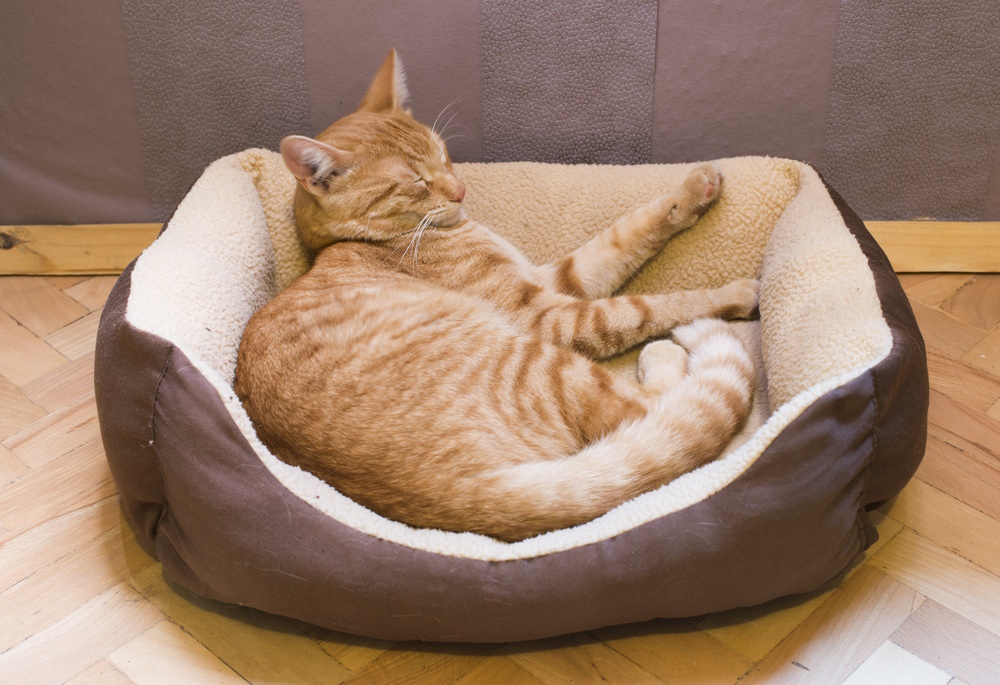
Some cats might warm right up, purring and cuddling up to everyone in the home. Other cats might hide away and keep scared behavior whenever you try to interact with them. Every cat can acclimate differently, so you should always respect their body language and let them decide.
You can always sit close to the cat, talking to them pleasantly and making them feel more comfortable. They might warm up with just a few attempts, or this process could take several days or weeks. There is really no one-size-fits-all answer.
10. Make Introductions Slowly
If you have other pets or small children living in the home, you will always want to make introductions slowly. If you’ve adopted a cat, they have already had meet and greets.
However, when it comes to in-home interaction, it can be important for everyone to stay back until the cat is acclimated. Most cats will be receptive to new friends, but they can take several days or weeks to warm up.
Always supervise any interaction and make sure no one or no pet is smothering the new cat.
11. Enrich Their Lives
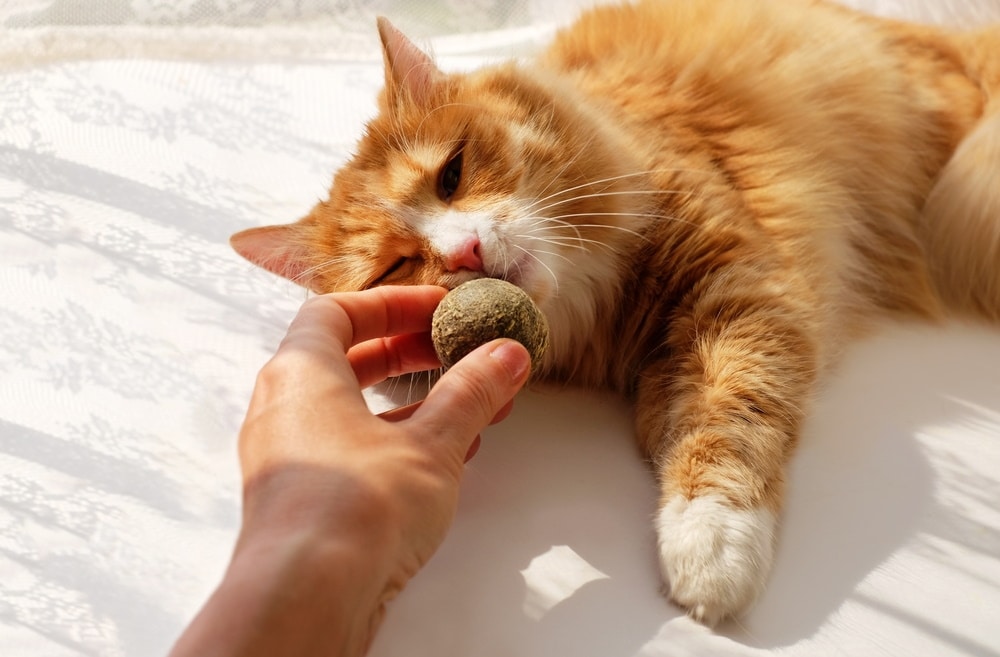
Don’t stop at just a few catnip-stuffed mouse toys. Get them a wide variety of entertainment that can keep them busy both when you’re at home and away. You can get intricate and build your own DIY project or opt to buy a series of games and puzzles online.
Puzzles
Cats really love puzzles! They love engaging their senses and trying to figure something out. These master problem solvers are excellent candidates for various brain games that will keep them busy for hours.
Catnip
Catnip is an age-old trick. But did you know that only 80% of cats are affected by it? It also causes different effects in various cats depending on personality and genetics. Catnip is generally inexpensive, but it can be full of pesticides. We recommend always buying organic!
Lots of cats go bananas for catnip. If your cat is one of them, we recommend Hepper's durable, engaging Catnip Stick Toy! These sturdy toys come in several fun colors and feature bite-proof double bagging and 100% organic catnip fill. They're also handmade in the USA and designed to look like your cat's natural prey.
At Catster, we’ve admired Hepper for many years and decided to take a controlling ownership interest so that we could benefit from the outstanding designs of this cool cat company!
Cat Grass
We’ve all had those cats that are houseplant eaters. To deter them from messing with your plants, you can get them a patch of grass of their very own. Cat grass is very easy to grow and you can get it virtually anywhere.
Silvervine
Silvervine has a very similar effect to catnip. It can sometimes affect the cats that are resistant to catnip. So, it is a fun alternative to try and is generally pretty inexpensive. You can get silver vine in powder or stick form. It is available in most pet shops or online.
12. Have Multiple Litter Boxes
Regardless of whether you only have a single cat or multiple cats in the home, it is always best to have multiple litter boxes.
The general rule of thumb is to have one litter box per cat, plus one. That means you will have a litter box for each one of your cats to have as their own, plus one additional litter box somewhere in the house. This will lessen the chance of territorial urination and other bad habits.
Combating tough cat litter smells is an ongoing battle for pet parents but luckily, there are products out there designed to help! Two products that significantly reduce odors are the Hepper Litter Additive and the Hepper Enzyme Spray. At Catster, we’ve admired Hepper for many years and decided to take a controlling ownership interest so that we could benefit from the outstanding designs of this cool cat company!
Image
Product
Details
Best Enzyme Cleaner

Hepper Advanced Bio-Enzyme Pet Stain & Odor Eliminator Spray
CHECK PRICE
Best Litter Additive

Advanced Bio-Enzyme Cat Litter Deodorizer
CHECK PRICE

Adjusting to New Homes
No matter if you’re getting a kitten or a fully grown cat, they are going to take some time to adjust. They will either be coming away from their mother and littermates for the first time or coming from a shelter or another home.
You know moving homes can be even harder on older cats. They have already formed their bonds and developed their personalities. It can be hard for them to readjust to new situations, and they might be very shy or hesitant.
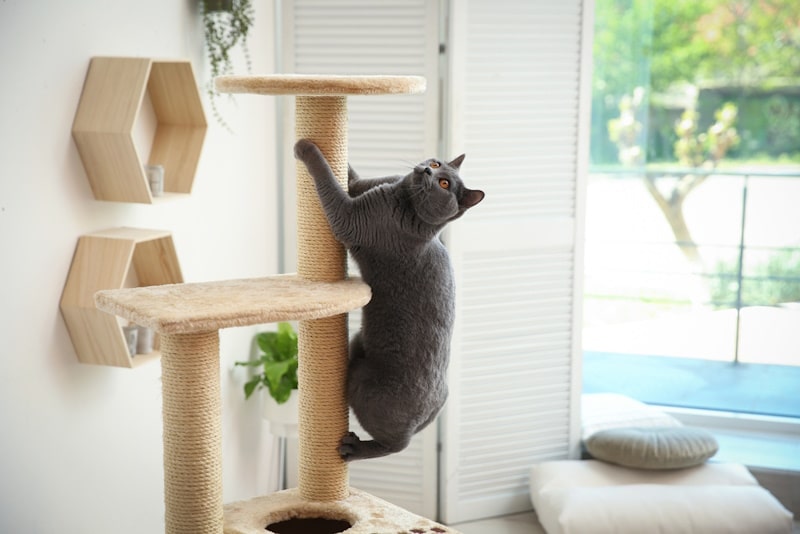

How to Kitten-Proof the Home
Kittens can get into everything! They always want to use their sharp claws to climb up your curtains, furniture, and even walls! When you have a small furry psychopath living in your home, you will want to make sure the environment is safe.
1. Check for Toxic Plants
Certain plants can be very dangerous for cats. If you have a rambunctious little kitten, they might attack the plant and even ingest some of it. Toxicity can range from mild to severe and will require veterinary attention. Always make sure to research any house plants to confirm their safety.
If you need to speak with a vet but can't get to one, head over to PangoVet. It's an online service where you can talk to a vet online and get the advice you need for your pet — all at an affordable price!

2. Secure Power Cords
Power cords can be wiggly! Your little one will probably want to pounce on everything they see. Make sure that you secure power cords and keep them out of their reach. While it is rare, cats can get electrocuted by chewing on the cords.
3. Trash Cans
Even though a trash can by itself is pretty harmless, its contents can be concerning. If you have certain food items in your trash, they might have spoiled or be toxic to cats. If your cat is a little trash digger, they could ingest or come into contact with something they shouldn’t.
4. Monitor Health
Over the next several weeks, once your cat gets home, they might lose their appetite or become a little lethargic. Stress really takes a lot out of anybody, and the same goes for your cat. They’ve just had a huge life change and it can significantly impact their immunity and overall mental health.
A little blues are normal in your cat’s first couple of weeks, but keep an eye on any developing health issues. If your cat develops anything like diarrhea, vomiting, or weight loss, contact your veterinarian right away.


Conclusion
Making your cat feel invited is the goal. But each cat will take their time warming up. This isn’t a process you can speed along; it is only something that you can manage as the time passes. With luck, your cat will acclimate right away, and you won’t have to worry about any scared behavior or awkwardness in between.
But most adult cats will be a little hesitant at first. All you can do is make the environment welcoming and be as accommodating as possible in their first several weeks in the new home.
Featured Image Credit: Shutterstock, Koldunov Alexey






